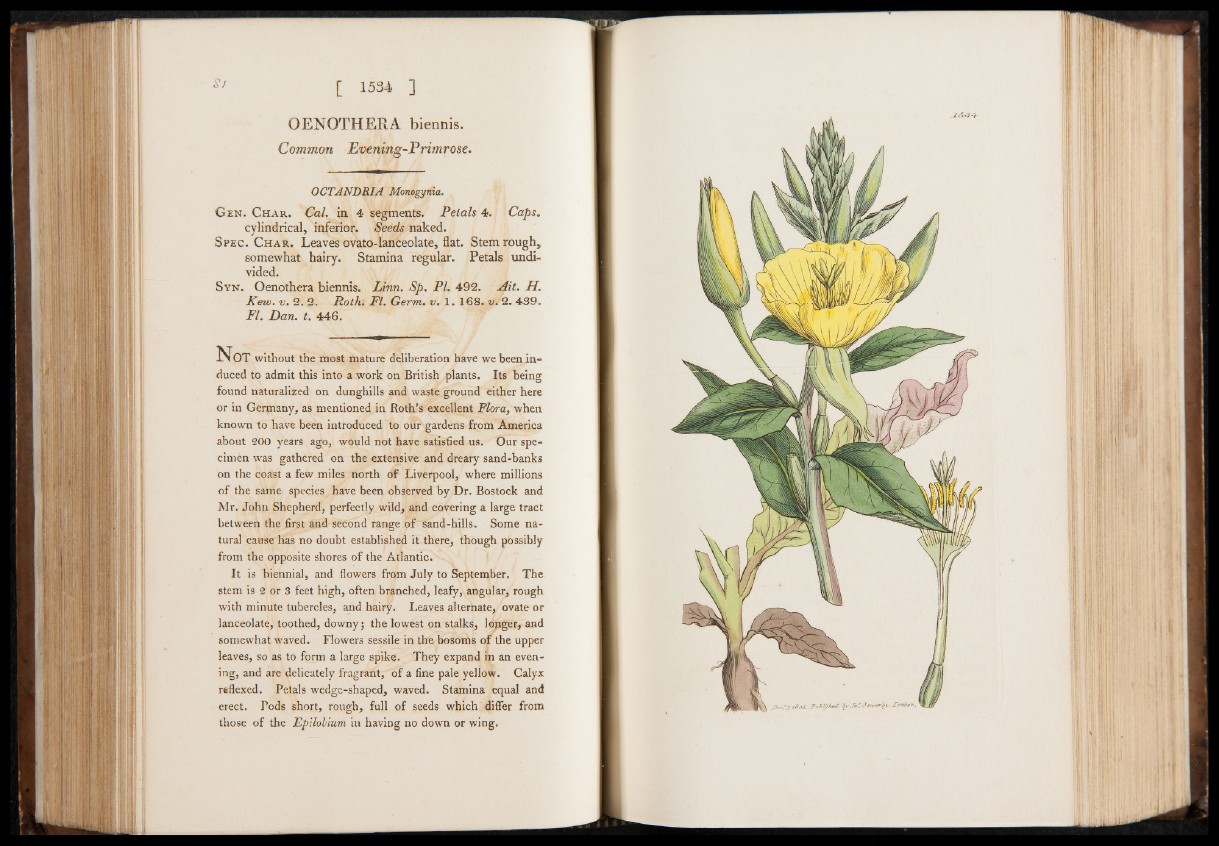
S j [ 1 534 ]
OENOTHERA biennis.
Common Evening-Primrose.
OCTANDRIA Monogynia.
Gen. Char. Cal. in 4 segments. Petals 4. Caps.
cylindrical, inferior. Seeds naked.
Spec. Char. Leaves ovato-lanceolate, flat. Stem rough,
somewhat hairy. Stamina regular. Petals undivided.
Syn. Oenothera biennis. Linn. Sp. PI. 492. Ait. H.
Kew. v. 2. 2. Roth. FI. Germ. v. 1. 168. v. 2 . 439.
FI. Dan. t. 4 4 6 .
N o t without the most mature deliberation have we been induced
to admit this into a work on British plants. Its being
found naturalized on dunghills and waste ground either here
or in Germany, as mentioned in Roth’s excellent Flora, when
known to have been introduced to our gardens from America
about 200 years ago, would not have satisfied us. Our specimen
was gathered on the extensive and dreary sand-banks
on the coast a few miles north of Liverpool, where millions
of the same species have been observed by Dr. Bostock and
Mr. John Shepherd, perfectly wild, and covering a large tract
between the first and second range of sand-hills. Some natural
cause has no doubt established it there, though possibly
from the opposite shores of the Atlantic.
It is biennial, and flowers from July to September. The
stem is 2 or 3 feet high, often branched, leafy, angular, rough
with minute tubercles, and hairy. Leaves alternate, ovate or
lanceolate, toothed, downy; the lowest on stalks, longer, and
somewhat waved. Flowers sessile in the bosoms of the upper
leaves, so as to form a large spike. They expand in an evening,
and are delicately fragrant, of a fine pale yellow. Calyx
reflexed. Petals wedge-shaped, waved. Stamina equal and
erect. Pods short, rough, full of seeds which differ from
those of the Epilobium in having no down or wing.